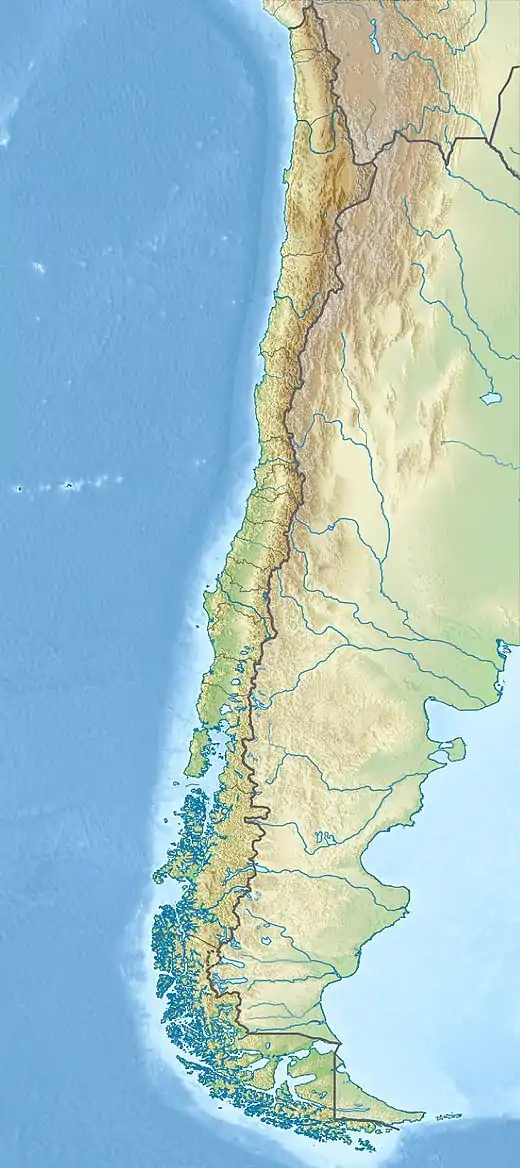| Tubul Formation | |
|---|---|
| Stratigraphic range: Early Pleistocene | |
| Type | Geological formation |
| Underlies | Quaternary sediments |
| Overlies | Ranquil Formation |
| Thickness | >100 m (330 ft) |
| Lithology | |
| Primary | Clay-rich sandstone and silt |
| Location | |
| Coordinates | 37°48′S 73°18′W / 37.8°S 73.3°W |
| Approximate paleocoordinates | 37°54′S 72°48′W / 37.9°S 72.8°W |
| Region | Bío Bío Region |
| Country | |
| Type section | |
| Named for | Caleta Tubul |
| Named by | Egidio Feruglio |
| Year defined | 1949 |
 Tubul Formation (Chile) | |
Tubul Formation (Spanish: Formación Tubul) is an Early Pleistocene (formerly described as Middle Pliocene in 1968 and Late Pliocene in 1976)[1] sedimentary formation located in Arauco Province in south–central Chile. Its sediments were deposited in marine conditions. It overlies unconformably the folded sedimentary formations of Ranquil (Miocene–Pliocene), Quiriquina (Late Cretaceous) and the Lebu Group (Paleocene-Eocene).[2]
Mollusc fossils found in the formation derives from soft-bed environments (contrary to rocky coasts). Evidence from the fossil mollusc fauna of the Tubul Formation seem to indicate that local water temperatures were lower in the Pliocene than today. Waters and mollusc faunas of Magallanes Region are modern-day equivalents of Tubul Formation.[3]
The formation was first defined by Egidio Feruglio in 1949.[3]
See also
References
- ↑ Las Peñas (Tubul Fm) at Fossilworks.org
- ↑ García A., Floreal (1968). Ceccioni, Giovanni (ed.). El Terciario de Chile Zona Central (in Spanish). Santiago de Chile: Ediorial Andrés Bello. pp. 25–57.
- 1 2 Valdovinos, Claudio; Nielsen, Sven N. (2006). "Mollusks of the Tubul Formation (South-Central Chile): Implications for the Early Pleistocene climate of the Southeastern Pacific" (PDF). XI Congreso Geológico Chileno. Vol. II. pp. 135–138. Archived from the original (PDF) on August 18, 2016.
Further reading
- S. N. Nielson and C. Valdovinos. 2008. Early Pleistocene mollusks of the Tubul Formation, south-central Chile. The Nautilus 122(4):201-216